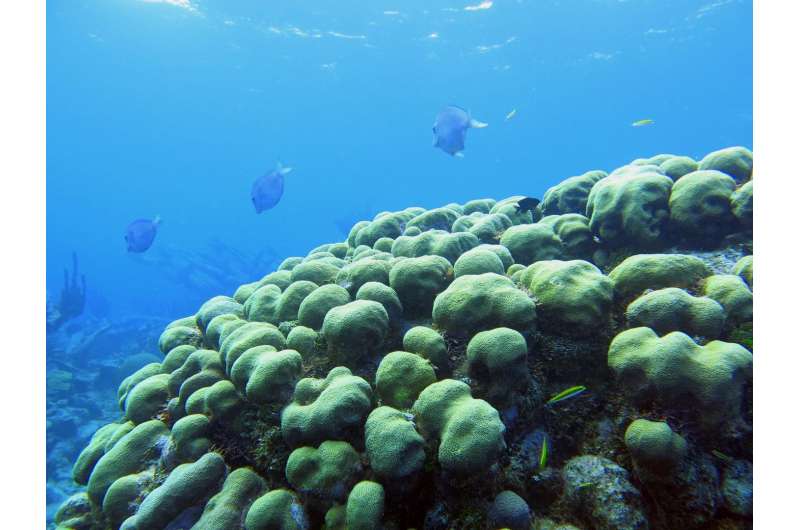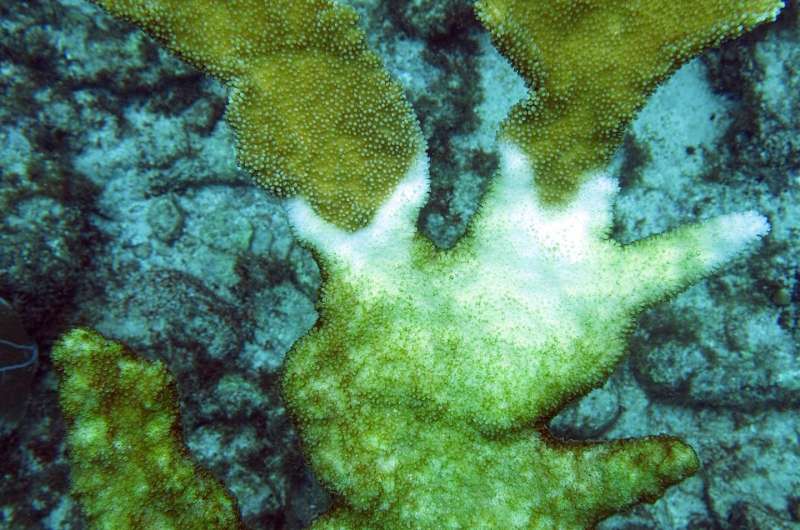Coral disease outbreaks fluctuate with El Niño years, new research finds

Occurrences of three common diseases affecting Caribbean corals spike during El Ni帽o years, an alarming association given how climate change may boost the intensity of El Ni帽os.
The findings from Florida Institute of Technology research associate Carly Randall and biology professor Rob van Woesik, published earlier this month in the journal Scientific Reports, are based on an analysis of 18 years of coral-disease data, at nearly 2,100 sites collected by the Atlantic and Gulf Rapid Reef Assessment Program. Those data were compared with 18 years of coinciding climate data to see if the disease cycles matched the climate cycles.
"We found that three coral diseases - white-band disease, yellow-band disease and dark-spot syndrome - peak every 2-4 years, and that they share common periodicities with El Ni帽o cycles," Randall said. "Our results indicate that coral diseases cycle predictably and that they often correspond with El Ni帽o."
And because of the potential increase in the intensity of El Ni帽o weather patterns associated with climate change, "our findings suggest that we might see diseases in corals ramping up in the coming decades," Randall added.
Because disease outbreaks in corals have followed El Ni帽o-fueled coral bleaching events in the past, there was speculation about the connection between the diseases and the El Ni帽o cycles, which are associated with warmer than usual weather in the Caribbean. This study, titled "Some coral diseases track climate oscillations in the Caribbean," confirms the speculation.
Such climate-driven patterns in the ocean are similar to patterns described for malaria and dengue fever on the land, which are reported to track climate cycles.

More information: C. J. Randall et al, Some coral diseases track climate oscillations in the Caribbean, Scientific Reports (2017).
Journal information: Scientific Reports
Provided by Florida Institute of Technology



















